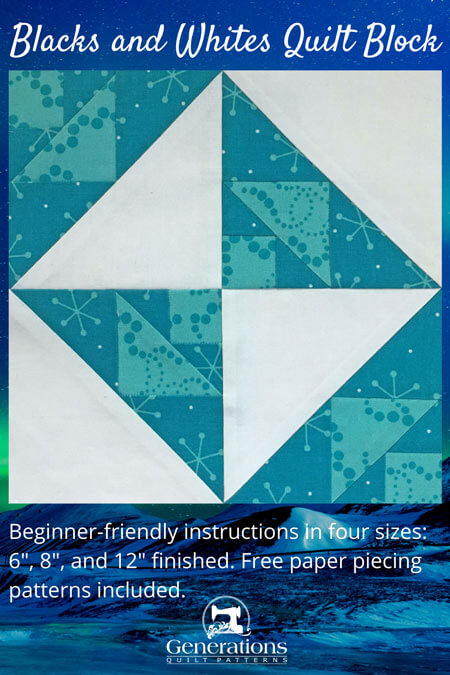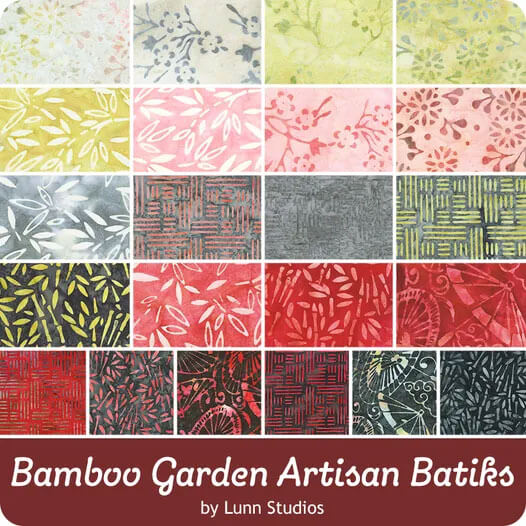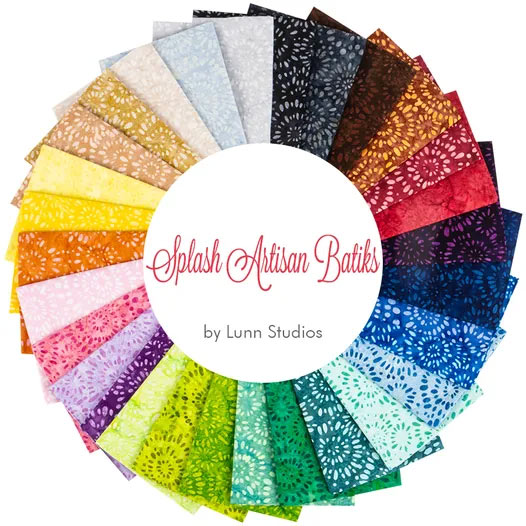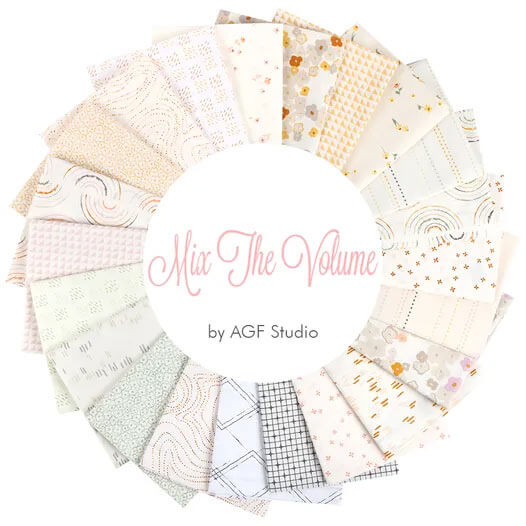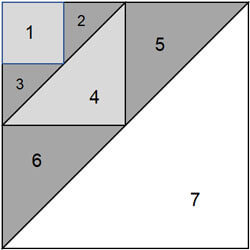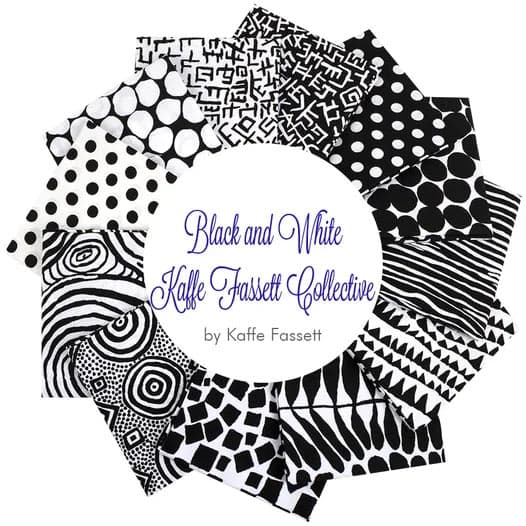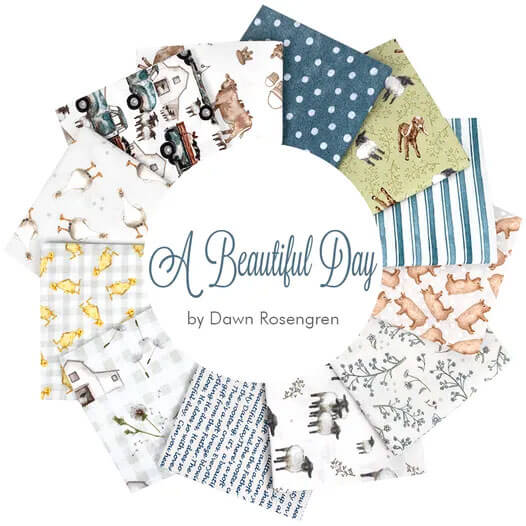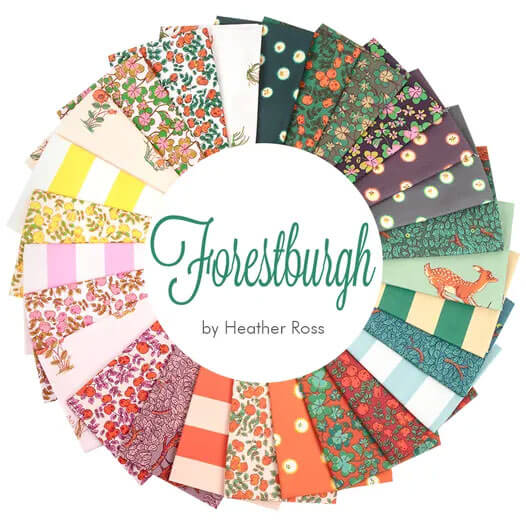- Home
- Free Quilt Block Patterns
- Blacks and Whites Quilt Block
Blacks and Whites Quilt Block Tutorial: 6", 8", and 12" Finished
From our Free Quilt Block Patterns Library
This post contains affiliate links, for which I receive compensation.
Want to add a bit of timeless elegance to your newest quilt project?
The Blacks and Whites quilt block and paper-piecing tutorial makes it easy for you to join the ranks of expert quilters with its crisp, pointy points in three sizes (6", 8" or 12")!
Using only 3 fabrics – light, medium, and dark - this classic pattern will make sure that every stitch stand the test of time.
Turn your fabric into something beautiful with this unique Blacks and Whites quilt block pattern!
📋 General Instructions
Several abbreviations are used on this page. They are:
- SA - seam allowance
- RST - right sides together
- HST - half square triangles
1/4" SA are used through this tutorial.
Pressing instructions are highlighted in yellow throughout this tutorial to make them easy to spot.
When pressing, first press the patches in the closed position just as they came off your sewing machine. This sets the seam, melding the fibers of the threads into the fibers of the fabric.
Then press the SA the only way you can—towards the last patch added or as instructed in the directions.
Download and print the paper piecing pattern
You'll need the most current version of Adobe installed on your computer to download the pattern.
On the Adobe Print Menu page, under 'Page Size and Handling' set 'Custom Scale' to 100% before printing for accurate results. Click here to see what it looks like on the Print Menu page.
Choose your finished block size from the chart below and print the corresponding number of pages for a total of 4 units.
Print the Blacks and Whites Units | |
|---|---|
| Click on the Finished Block Size | Print this many pages for each block |
| 6" | 1 |
| 8" | 2 |
| 12" | 4 |
After printing, use the 1" square graphic on the printed page(s) to double check that your patterns printed at the correct size.

Not sure which paper to use?
Take a look at my review of several of the most popular brands available to us quilters on the market.
You want a super-easy paper to tear away—less stress on the stitches.
You're not crazy!
Did you experience a bit of Déjà vu when you printed the paper piecing patterns?
If you've made the Harmony Square quilt block, that's where you saw this unit before.
The newest quilt fabrics to tickle your fancy...
Click the images below to see the full collection. We share any commercial and/or free patterns that showcase them, too. (For inspiration, of course!)
Step 1: Cutting patches for a Blacks and Whites quilt block
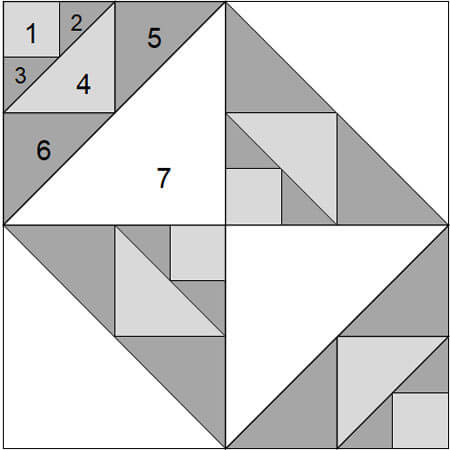 Blacks and Whites quilt block design
Blacks and Whites quilt block designSample Block Size: 8" finished / 8½" unfinished
Grid: 8x8
Attribution: Nancy Cabot
Design Type: 4-patch
Please label all your patches. We refer to their numbers throughout this tutorial.
To print a copy of the block design and cutting chart to use at your cutting table, click here.
 | Cutting Chart for a~Paper Piecing~ | |||||
|---|---|---|---|---|---|---|
| Patch | Fabric | Qty | Finished Block Size | Sub Cut | ||
| 6" | 8" | 12" | ||||
| 1 | Dark | 4 | 1½" x 1½" | 1¾" x 1¾" | 2¼" x 2¼" | --- |
| 2,3 | Med | 4 | 2⅛" x 2⅛" | 2⅜" x 2⅜" | 2⅞" x 2⅞" | |
| 4 | Dark | 2 | 2⅞" x 2⅞" | 3⅜" x 3⅜" | 4⅜" x 4⅜" | |
| 5, 6 | Light | 4 | 2⅞" x 2⅞" | 3⅜" x 3⅜" | 4⅜" x 4⅜" | |
| 7 | Med | 2 | 4⅜" x 4⅜" | 5⅜" x 5⅜" | 7⅜" x 7⅜" | |
| Unfinished Block Size | 6½" | 8½" | 12½" | --- | ||
| Grid Size | ¾" | 1" | 1½" | --- | ||
Did you remember to subcut Patches #2-#7 once on the diagonal to create triangles? Double-check the cutting chart if you missed this step.
With a small dot of Elmer's Washable Glue Stick, adhere the #1 square to the unprinted side of the pattern using the dashed guidelines to make positioning it easy.
With RST, align one shorted side to the edge of #1 that overlaps the #2 patch on the printed pattern. This patch is cut oversized to make positioning it almost foolproof.
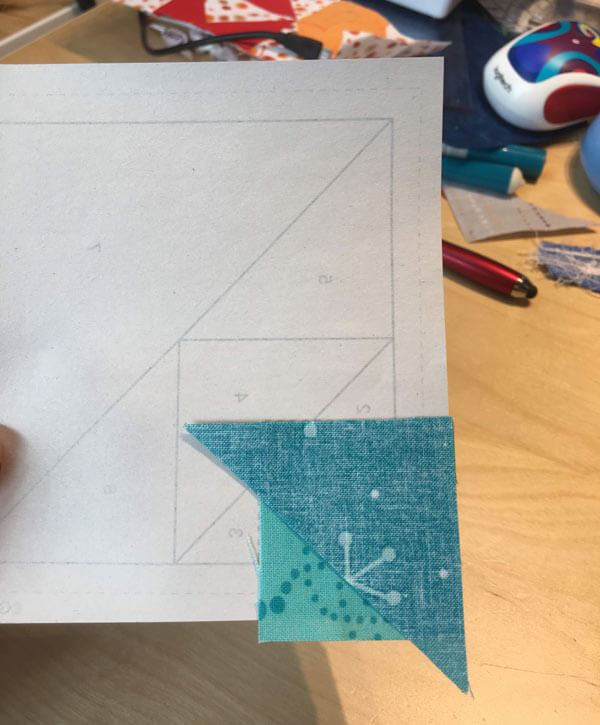
Get your sewing machine set for paper piecing.
General Sewing Machine Setup for Paperpiecing
- Reduce your stitch length to 16–20 stitches per inch (1.3-1.6 mm). This perforates the paper and stabilizes the seam when you remove the pattern. [Learn more about stitch length here.]
- Reduce your machine's speed or just plain slow down. Sew only as fast as you can stay on the stitching lines.
- Install an open toe appliqué foot (sometimes called an 'embroidery' or 'satin stitch' foot) if you have one (it's easier to see where you're stitching with one installed).
- Use a larger needle (90/14) if you have problems removing the pattern.
- If your machine has a needle stop up, use it. The stitching goes faster when you don't have to lift the presser foot with every seam.
- As you stitch each seam, start and stop a generous 1/4” before and after the solid stitching lines. ALWAYS. Future lines of stitching secure the ends.
After adding each patch, press the unit as it was sewn to set the seam and then open. The SA is automatically pressed towards the last patch added.
Before adding the next patch, take a look to make sure the one you just added covers the space plus seam allowance that it is supposed to.
Steam is optional and usually curls the pattern.
If that bothers you, don't use steam. Sometimes I do. Sometimes I don't.
It truly depends on my mood.
Remember, as you follow this paper piecing tutorial, the printed and the fabric sides of this block are mirror-images of each other.
At last!
Let's sew!
Stitch on the line between #1 and #2, starting and stopping before and after the printed line by a generous 1/4".
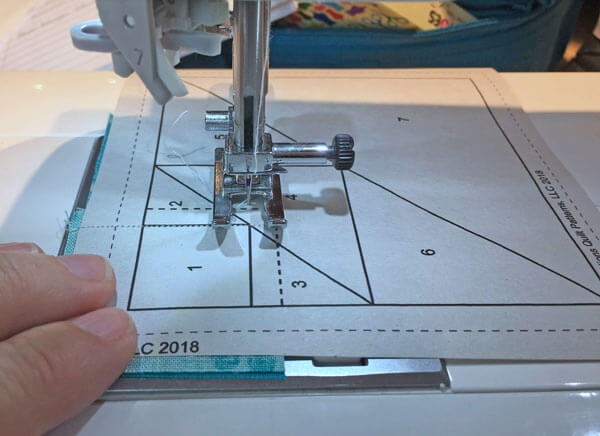
Press.
With RST align a short edge of #3 with the available edge of #1 and stitch as before.
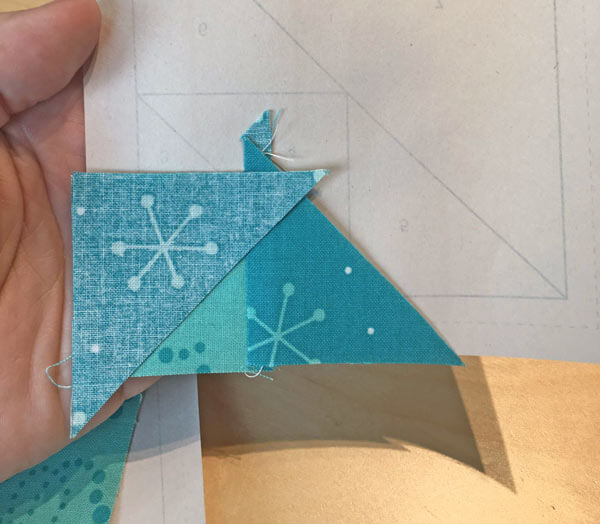
Press.
These patches need a trim to create a good 1/4" SA.
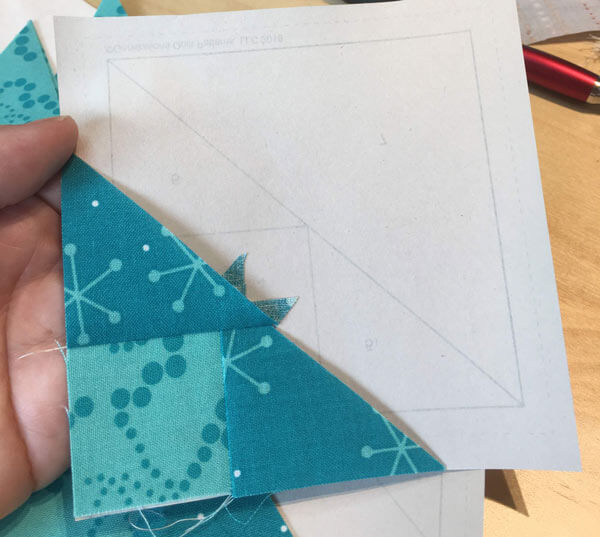
At your cutting mat, from the printed side position your ruler over the solid line that is the edge of #2/#3. Fold back the pattern on that line.
You'll probably need to tear the paper away from the seam just a bit. That's normal for paper piecing. If you rip the paper too much, use a bit of Scotch Brands® Magic Tape to repair the pattern.
Position the 1/4" line on your ruler (red arrow below) directly on the fold and trim away the excess fabric.
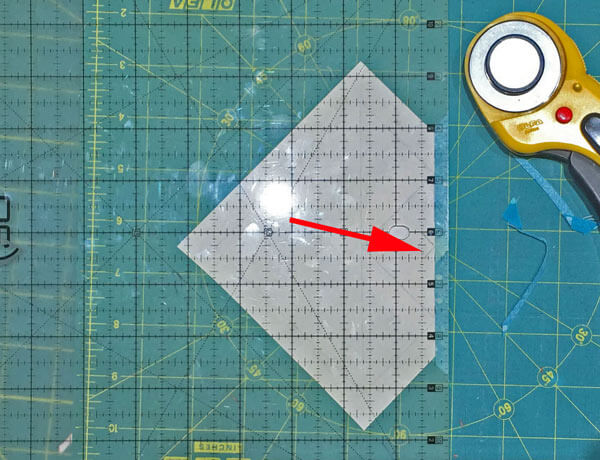 The trimmed bits almost blend into the cutting mat
The trimmed bits almost blend into the cutting matNow we know exactly where the 1/4" SA is.
With RST, align the #2/#3 edge with the bias cut of #4.
Sew as before.
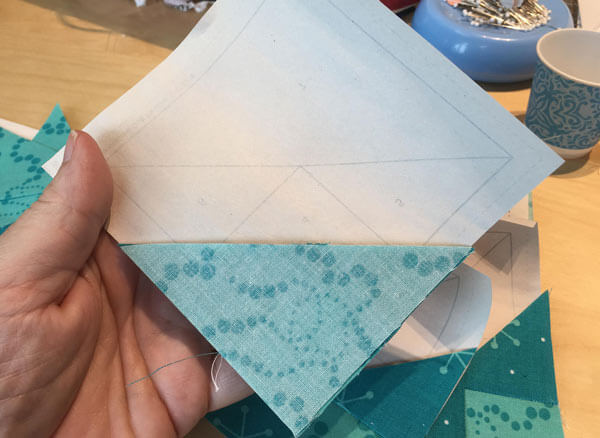
Press.
So far, we've got the four units to this point. They're starting to look like something now!
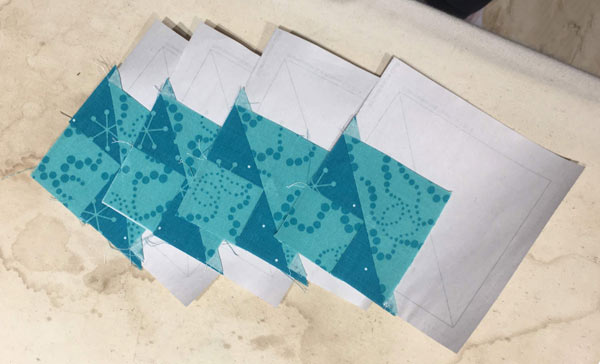
Back at the cutting mat, trim both exposed edges of #4, folding on the solid line, positioning the ruler for trimming to 1/4" SA.
Do this for both sides of all 4 units.
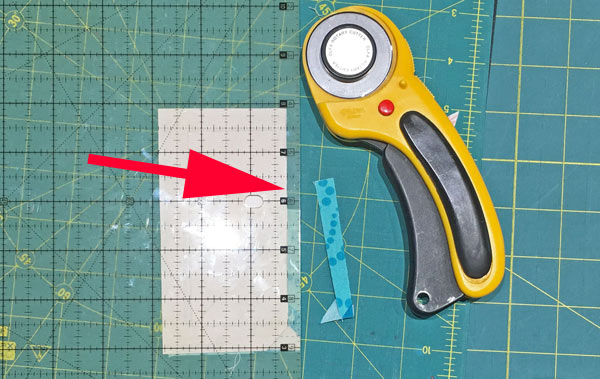
After trimming, your Blacks and Whites should look something like this. Those little bits were torn out of the paper pattern along the way. As long as it isn't ripped completely, this is just fine and won't affect your piecing.
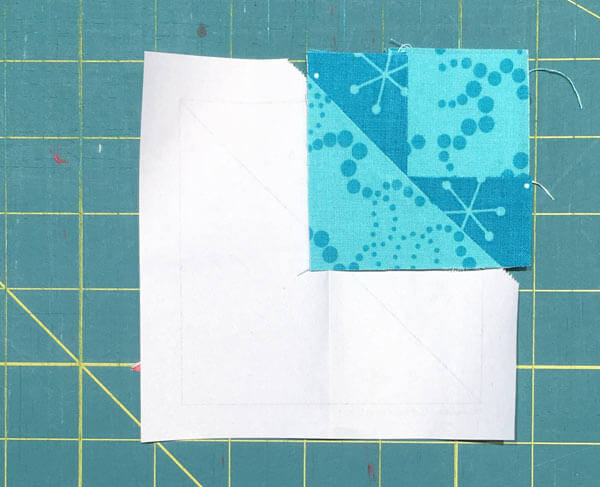
Add the #5 and #6, in the same fashion as the #3 and #4 were.
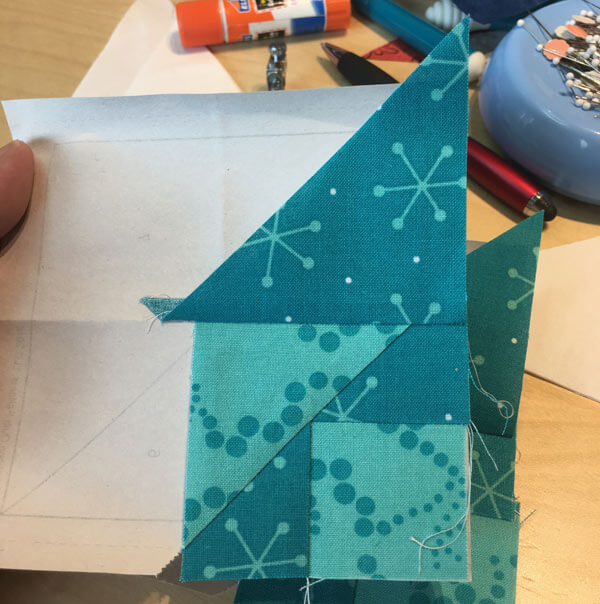
Trim #5 and #6 just as we #3 and #4 to establish that perfect 1/4" SA.
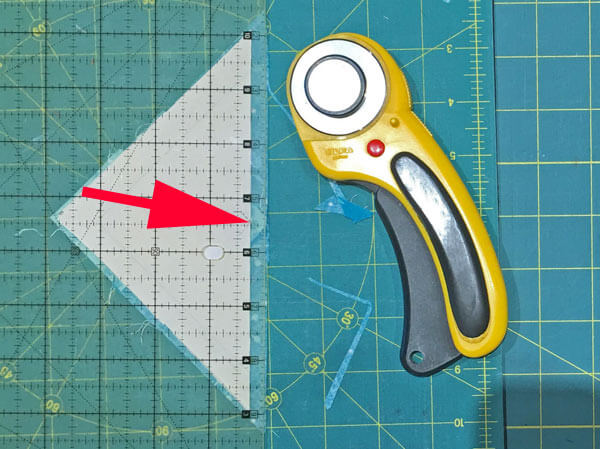
I know it's tempting to skip the trimming, but it does make it easier to position the next patch exactly where it should be to avoid having to rip out the patch.
We want to avoid ripping out those shorted paper piecing stitches if we can! It's too much like work.
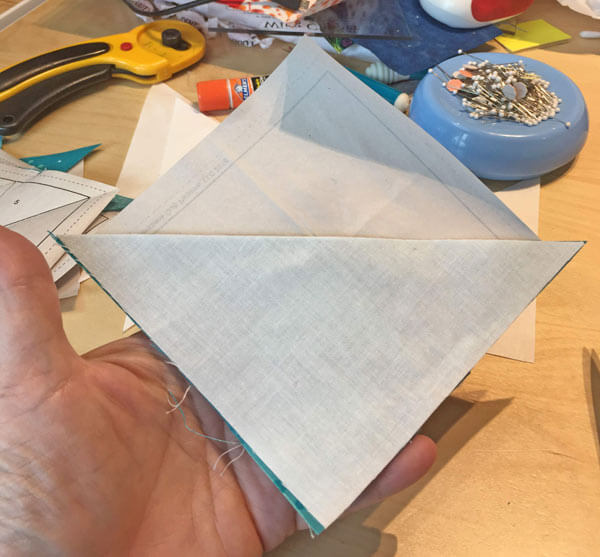
Press.
At this point, our units look rather like a hot mess. Trimming them to size fixes that.
I find it much easier to align the 1/4" marking on the ruler with the solid outside lines of the pattern to trim.
We're left with beautiful pointy triangle points. A center diagonal seam that is perfectly placed.
There's nothing like paper piecing for truly accurate patches.
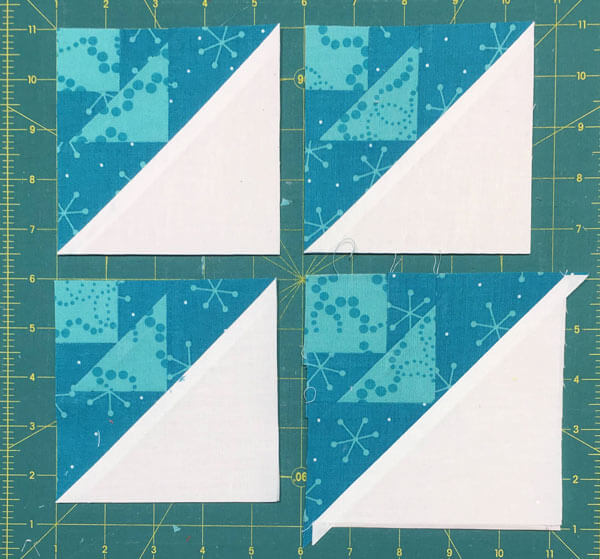 One more unit to trim...the lower right
One more unit to trim...the lower rightRemember, our patches are cut so that the outside of the block is all on straight of grain.
With no bias to stretch out of shape, I remove the paper now.
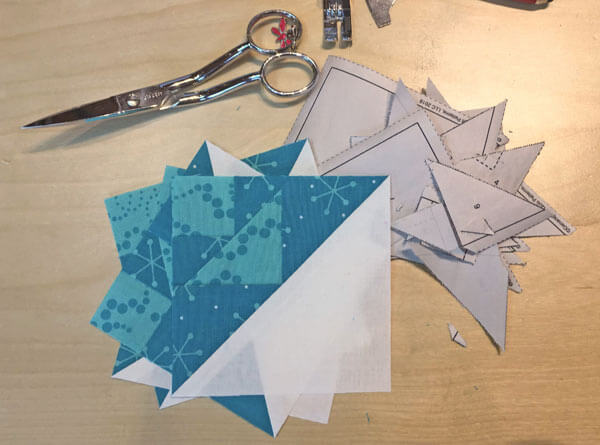

The paper piecing is complete. From this point forward, return your stitch length to the one you regularly use for piecing and install your favorite 1/4" presser foot.
Step 3: Assemble the Blacks and Whites quilt block
Arrange the four paper pieced units into the Blacks and Whites design.
Opposite pairs of the large HSTs are in the center. The other opposite pair has their large HSTs in the corners.
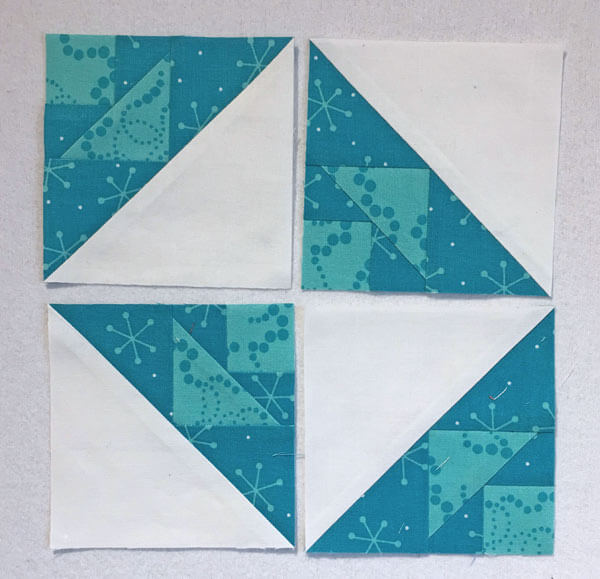
Sew the pairs together into rows.
The seams through the diagonal center of each will nest to make matching the points so much easier. (Love it when that happens without any extra work!)
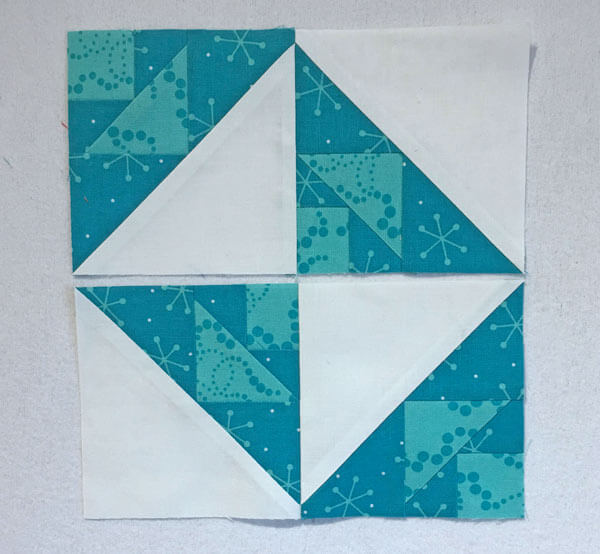
Press, with the SA towards the light #7.
Sew the rows together, pinning as needed to help match the seams and points.
Take a look at the stunning Blacks and Whites quilt block you just completed! Clean lines, beautiful balance – it's a real showstopper.
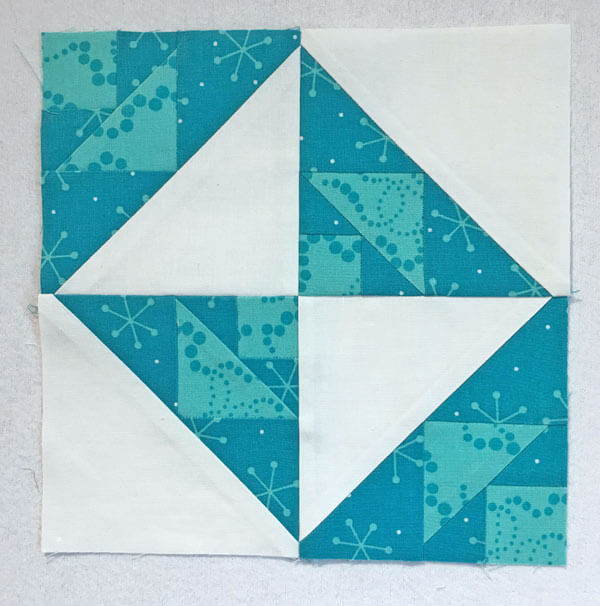 Just love the nice matches at the center and outside points of this block
Just love the nice matches at the center and outside points of this blockTo eliminate bulk at the center of the block, we're going to twirl or fan the seam allowances.
In addition to reducing the bulk, this technique makes it easier for you to set the blocks together edge-to-edge in a quilt design if you'd like. Those center seams between the blocks will always nest.
Again, nested or abutted SA are less work to match.
After twirling the SA, give your Blacks and Whites a final press.
From the back side you can see all that seam allowance twirling going on!
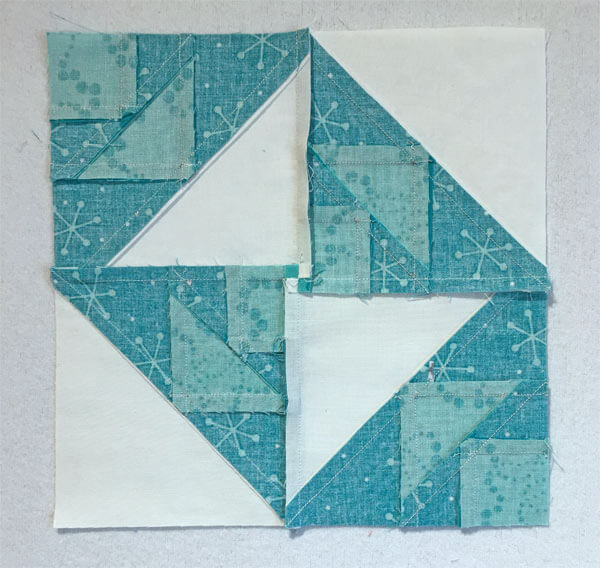 When the seam allowances are fanned or twirled, they form a little 4-patch on the back side
When the seam allowances are fanned or twirled, they form a little 4-patch on the back sideWhat about a different quilt block?
For a list of all the 220+ quilt block patterns on this site, start here.
If you know the name of the block, shorten your search by using these links:
Click here if you're looking for blocks with at least some paper piecing.
Click here if you're looking for the basic building blocks of quilting, i.e., Flying Geese, half square triangles, quarter square triangles, etc., along with several techniques to make each.
And finally, use these links to find blocks in these finished sizes:
- Home
- Free Quilt Block Patterns
- Blacks and Whites Quilt Block
